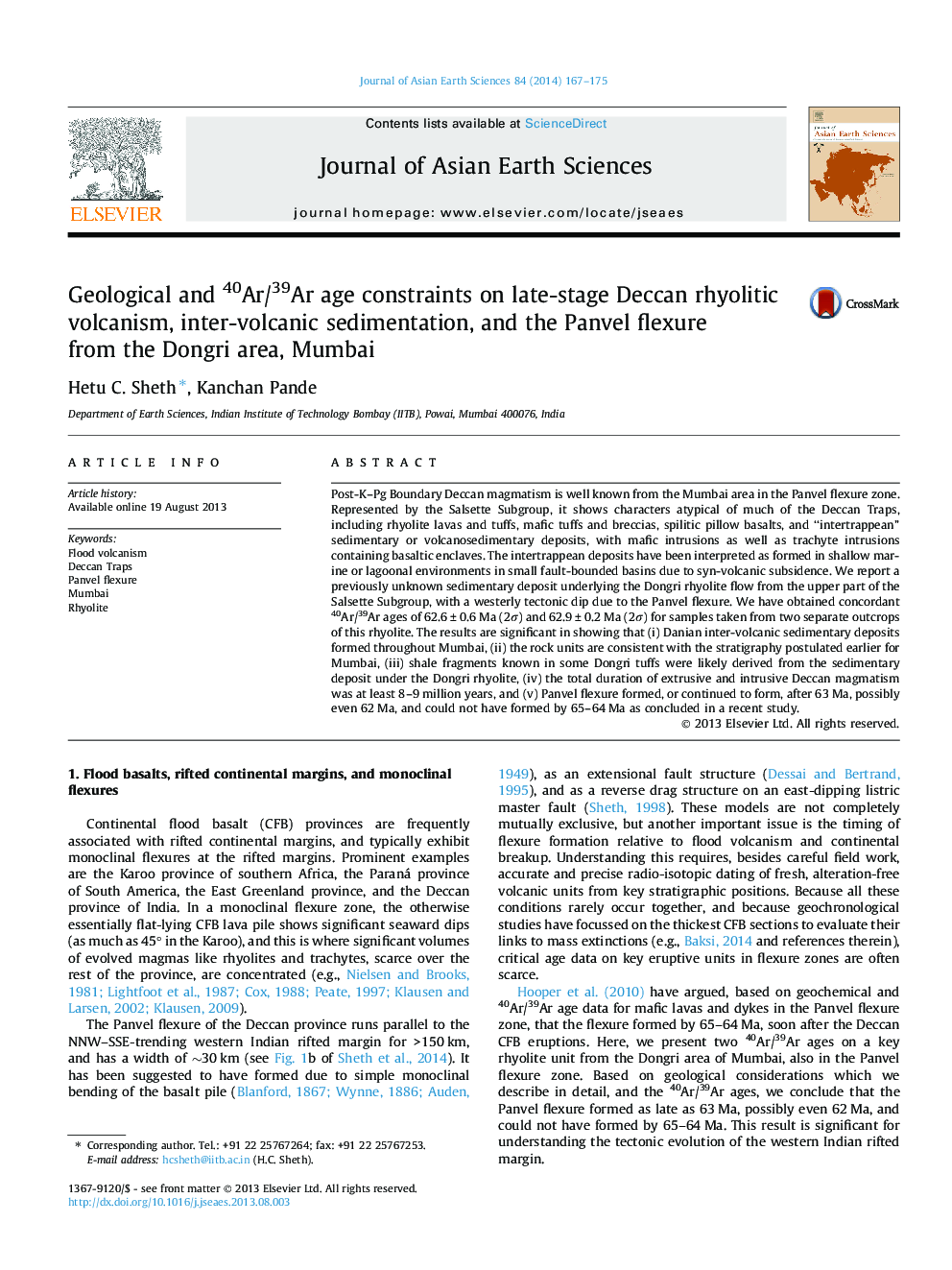| کد مقاله | کد نشریه | سال انتشار | مقاله انگلیسی | نسخه تمام متن |
|---|---|---|---|---|
| 4730754 | 1640384 | 2014 | 9 صفحه PDF | دانلود رایگان |

• Tectonically dipping Dongri rhyolite flow in Mumbai.
• Dated by 40Ar/39Ar technique at 62.6 ± 0.6 Ma (2σ) and 62.9 ± 0.2 Ma (2σ).
• Sedimentary deposit under rhyolite, and tuff overlying rhyolite.
• Fragments of shale in tuff derived from sedimentary deposit.
• Ages suggest Panvel flexure forming after 63–62 Ma.
Post-K–Pg Boundary Deccan magmatism is well known from the Mumbai area in the Panvel flexure zone. Represented by the Salsette Subgroup, it shows characters atypical of much of the Deccan Traps, including rhyolite lavas and tuffs, mafic tuffs and breccias, spilitic pillow basalts, and “intertrappean” sedimentary or volcanosedimentary deposits, with mafic intrusions as well as trachyte intrusions containing basaltic enclaves. The intertrappean deposits have been interpreted as formed in shallow marine or lagoonal environments in small fault-bounded basins due to syn-volcanic subsidence. We report a previously unknown sedimentary deposit underlying the Dongri rhyolite flow from the upper part of the Salsette Subgroup, with a westerly tectonic dip due to the Panvel flexure. We have obtained concordant 40Ar/39Ar ages of 62.6 ± 0.6 Ma (2σ) and 62.9 ± 0.2 Ma (2σ) for samples taken from two separate outcrops of this rhyolite. The results are significant in showing that (i) Danian inter-volcanic sedimentary deposits formed throughout Mumbai, (ii) the rock units are consistent with the stratigraphy postulated earlier for Mumbai, (iii) shale fragments known in some Dongri tuffs were likely derived from the sedimentary deposit under the Dongri rhyolite, (iv) the total duration of extrusive and intrusive Deccan magmatism was at least 8–9 million years, and (v) Panvel flexure formed, or continued to form, after 63 Ma, possibly even 62 Ma, and could not have formed by 65–64 Ma as concluded in a recent study.
Journal: Journal of Asian Earth Sciences - Volume 84, 15 April 2014, Pages 167–175